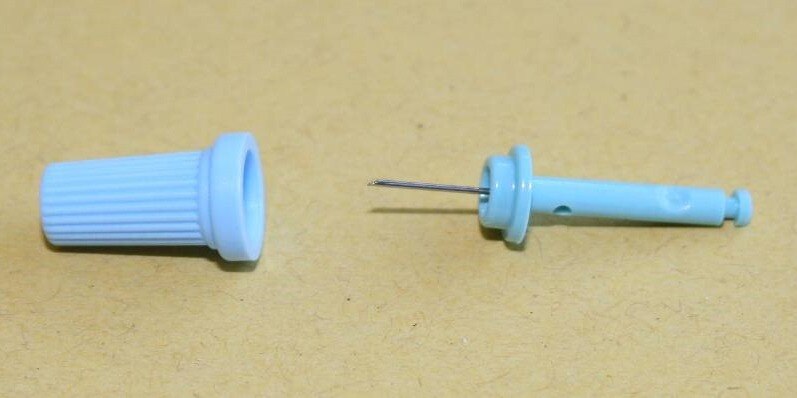Induction Brazing an Aluminum Assembly
Objective A company wanted to assess using induction heating for their aluminum assembly brazing process, and contacted THE LAB at Ambrell to utilize...
Applications
Applications: More
Applications: More

Industries:
Industries: More
Industries: More
Industries: More

Products:
Products: More
Services:
Services: More

Learn:
Learn: More
About:


A customer needed to heat a stainless-steel needle within a plastic shank to form a dental perforator and submitted their parts to Ambrell for testing.
More induction bonding application notes
THE LAB at Ambrell determined that an Ambrell EASYHEATTM 1.2 kW, 150-400 kHz induction heating system with a workhead and specially designed pancake induction heating coil would work well for this induction bonding application.
Initial tests were conducted to optimize the power delivered to the part. Ten assemblies were placed in the coil and power was applied for one second to melt the plastic to the stainless-steel needle and achieve a 5 kg pull out strength. 3,000 parts could be processed per day with this setup. This met the customer's objectives.
Induction heating offers several benefits when compared to other heating options for this medical bonding application. First, it delivers consistent, repeatable heat that forms a reliable bond. It forms a more stable and reliable bond than ultra-sonic heating. It also leads to a faster process time and a more even distribution of heat. Finally, induction offers hands-free heating that isn't dependent on operator skill like other heating methods.
Check out our Medical Applications Brochure to see other medical applications using induction heating. And, if you have an application that might benefit from testing, contact THE LAB to take advantage of free induction heating application testing from our knowledgeable applications team. We'll send you a video and lab report after testing, and if you'd like to see the testing live, you can take advantage of our Virtual Lab Service.

Objective A company wanted to assess using induction heating for their aluminum assembly brazing process, and contacted THE LAB at Ambrell to utilize...

Induction heating is a process that uses electromagnetic fields to heat electrically conductive materials. It has been used in numerous industries...

Induction heating, a process that uses electromagnetic induction to heat electrically conductive materials, is often thought of for large industrial...